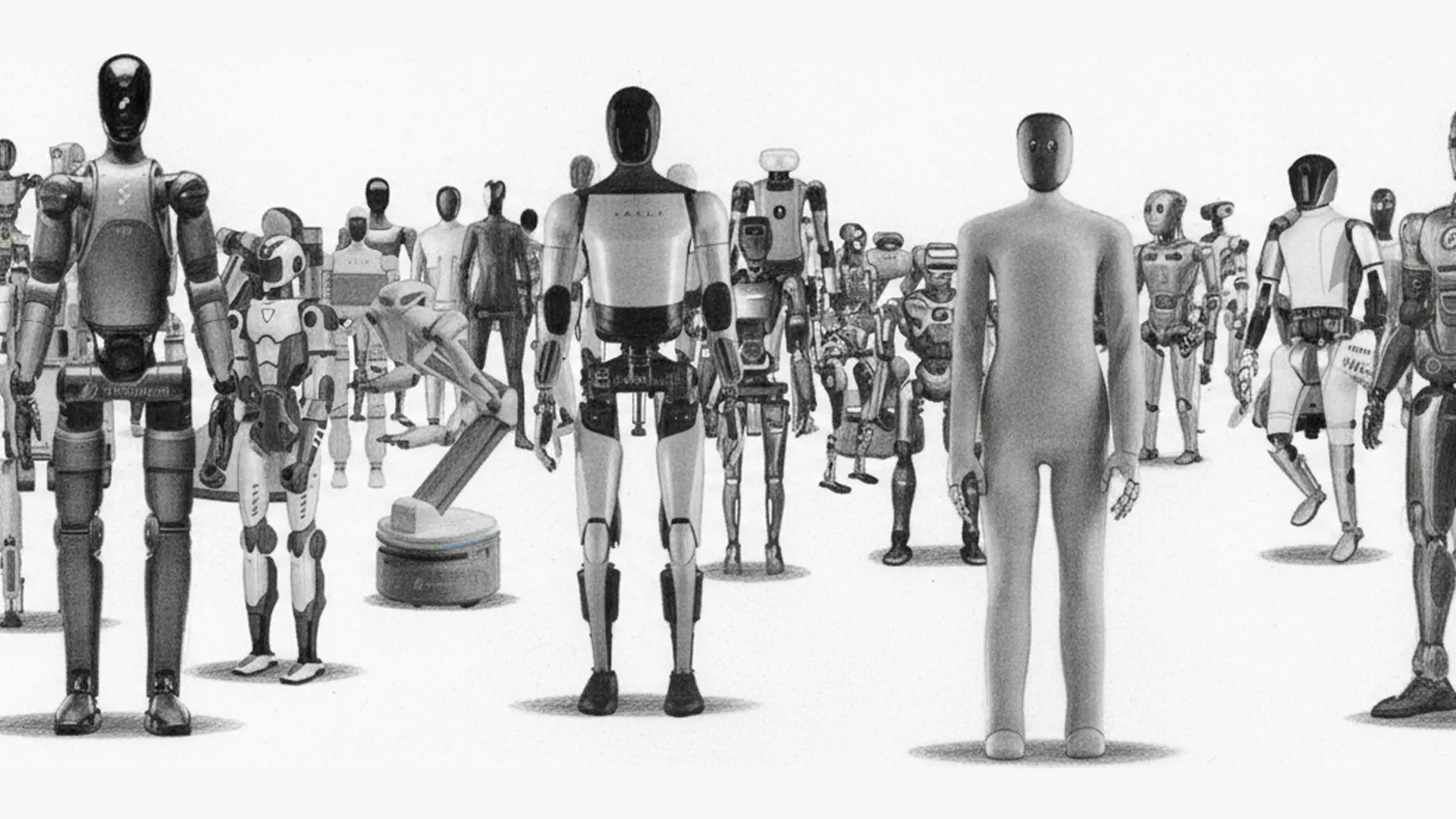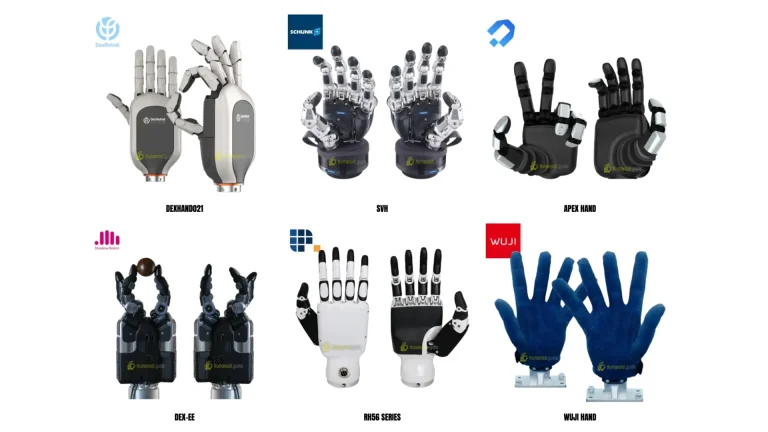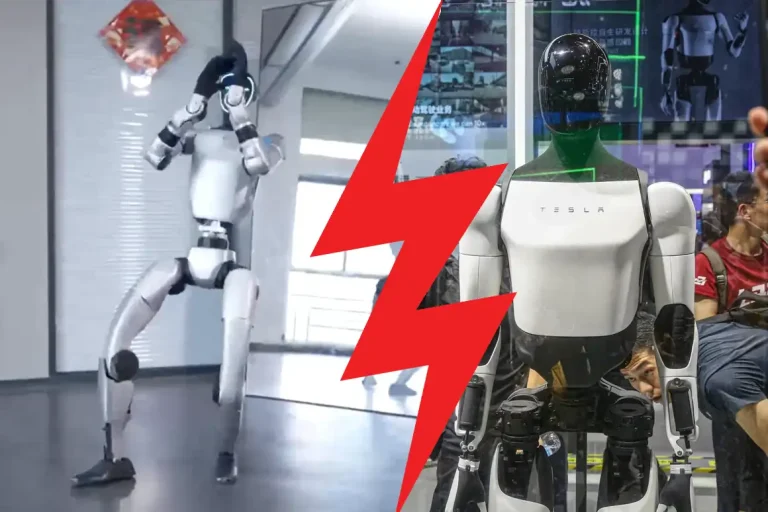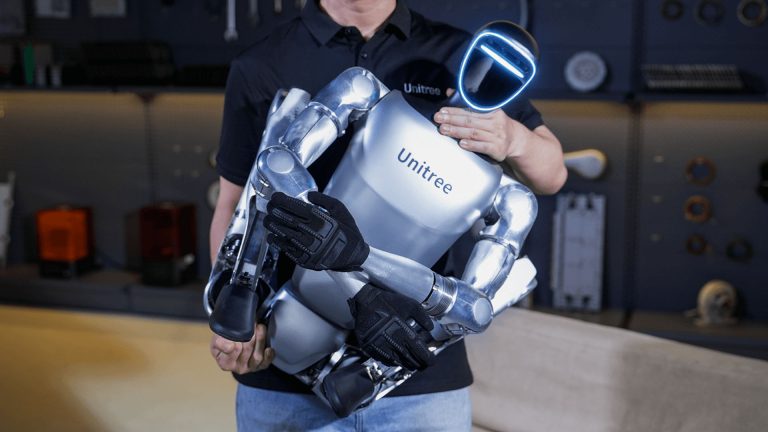Humanoids at the Tipping Point: Why This Market Could Be Massive and What Still Stands in the Way
Physical work is roughly half of the world’s economy, and the built world is, as Jensen Huang likes to say, a “brownfield” made for people, not for bespoke machines. That single observation explains why the next general-purpose computer may not sit on a desk. It will walk into a factory, open a door, turn a valve, and carry a box and do everything humans do.
2026 Humanoid Robot Market Report
160 pages of exclusive insight from global robotics experts – uncover funding trends, technology challenges, leading manufacturers, supply chain shifts, and surveys and forecasts on future humanoid applications.

Featuring insights from
Aaron Saunders, Former CTO of
Boston Dynamics,
now Google DeepMind
If the PC and smartphone are universal machines for information, humanoids are universal machines for the physical world. Sure, a specialized robot can beat a humanoid on a single narrow task, just like a hypothetical 1-watt “Excel appliance” could beat a 100-watt PC at spreadsheets. But nobody wants a new box for every app. The world standardized on general-purpose computers. I believe the same logic will increasingly apply to robots designed for human spaces and tools.
From Sci-Fi to Purchase Orders

A decade ago, humanoids were science fiction. Today, capital and talent are pouring in. Some Chinese vendors are already advertising early models at aggressive price points, and across the U.S., Europe, and Asia, pilots are moving from YouTube demos to real workflows. If the first time a humanoid outperforms a human on a task with big economic weight arrives and it will that “ChatGPT moment for physical work” could compress adoption timelines dramatically.
What Our New Report Covers
To separate noise from signal, we just published the Humanoid Robot Market 2025/2026 at Humanoid.guide. It brings together practitioners who’ve shipped real systems, people like Aaron Saunders (who led the engineering behind Boston Dynamics’ Atlas), Rob Knight (a leading open-source humanoid voice), and Per Selvaag (former 1X design lead). I’ll keep the marketing subtle: if you want the deep dive with data, contributor essays, and vendor maps, it’s there. If not, here’s my short version.
The Next Frontier Isn’t Legs. It’s Hands.
For years, locomotion stole the spotlight: walking, running, backflips, stairs. Impressive, necessary and incomplete at the same time. A robot that can’t grasp, turn, twist, pinch, or feel becomes a delivery vehicle for hands it doesn’t have. The next wave is manipulation: strong, robust, sensitive hands and wrists with the right actuators, transmissions, and sensing to approach human-level dexterity. That, in turn, unlocks the data flywheel.
The Data Flywheel for Physical Intelligence
Great hands make great data. And great data makes great policies. We don’t yet have a universal “robot brain,” but we don’t need one to create value. Once a task policy is learned well say, picking and placing a tricky object, fastening a connector, or closing a latchit can be deployed to millions of identical platforms. Think of it like installing an app on a phone…except the “phone” can lift 20 kg and use a screwdriver.
Expect two reinforcing trends:
- Embodied AI Platforms: A handful of players (big tech and focused startups) will compete to be the “OS for physical work”, the stack that spans perception, action, and memory.
- Sim-to-Real at Scale: With rapidly improving simulators and reinforcement learning, the long-term path is policies that are trained in rich, physics-accurate worlds and then transferred to reality with ever-thinner adaptation layers.
Safety Will Decide Winners
As deployments move from labs to loading docks, safety stops being a slide and becomes the product. Draft ISO standards for legged and humanoid systems are maturing, and they will be strict. Teams that design for safety from day one architecture, sensing, fault handling, force limits, and human factors will move faster when the audits start. Users intuitively assume safety; regulators will rightfully require it.
It’s Also a Capital Game
One hard truth: to stay in the game long enough to compound, you need a war chest. Robotics winters are real. Cash buys iteration cycles, data collection, infrastructure, and time to pass safety bars. As Aaron Saunders often notes, the companies that can fund the grind will still be standing when the market arrives.
The Geopolitics: China vs. the U.S. (and Everyone Else)
This is now an industrial race. China currently leans strong on mechanics, production, and control; the U.S. leads in AI software and chips. Supply chains and export regimes will matter as much as algorithms. The likely outcome is a multi-polar market with regional champions, localized supply, and different safety and labor frameworks.
The Hurdles We Still Need to Clear
Here are the big blockers I see, and how we get past them:
- Dexterous Manipulation
- Blocker: Hands that are simultaneously strong, durable, compliant, and cheap are still rare.
- Path forward: New actuator/transmission designs (including QDD variants), tendon or belt systems with better life cycles, fingertip sensing, and low-latency control stacks.
- Task Data & Generalization
- Blocker: We lack large, diverse, high-quality datasets for real manipulation in messy environments.
- Path forward: Fleet learning (every attempt becomes training data), structured task libraries, simulation libraries with fast domain randomization, and standardized evaluation suites.
- Safety & Certification
- Blocker: Ambiguity around standards slows buyers and insurers.
- Path forward: Build to draft ISO requirements now; invest in verification, formal methods where practical, and ergonomic co-working patterns that earn trust.
- Unit Economics
- Blocker: Cost of actuators, gearboxes, batteries, and service remains high; MTBF is unproven outside pilots.
- Path forward: Design for manufacturability from v1, shared platforms across SKUs, and business models that match risk (Robot-as-a-Service, outcome-based pricing).
- Change Management on the Floor
- Blocker: Even when a robot works, workflows and unions, IT/OT integration, and training can stall rollouts.
- Path forward: Start with “drop-in” tasks, standard APIs to MES/WMS, and clear playbooks for supervisors.
What Tips the Market
The tipping point comes when a humanoid reliably beats a human on one economically meaningful task with clear payback, and then scales that policy across fleets. After that, compounding takes over: more deployments → more data → better policies → broader task coverage. The economics can get extreme, fast.
If you want the full landscape: vendors, specs, cost curves, safety outlook, “brain vs. body” stacks, and essays from the people named above, our Humanoid Robot Market 2025/2026 report is available at Humanoid.guide. It’s built to help builders, buyers, and investors decide what’s real, what’s missing, and what’s next.
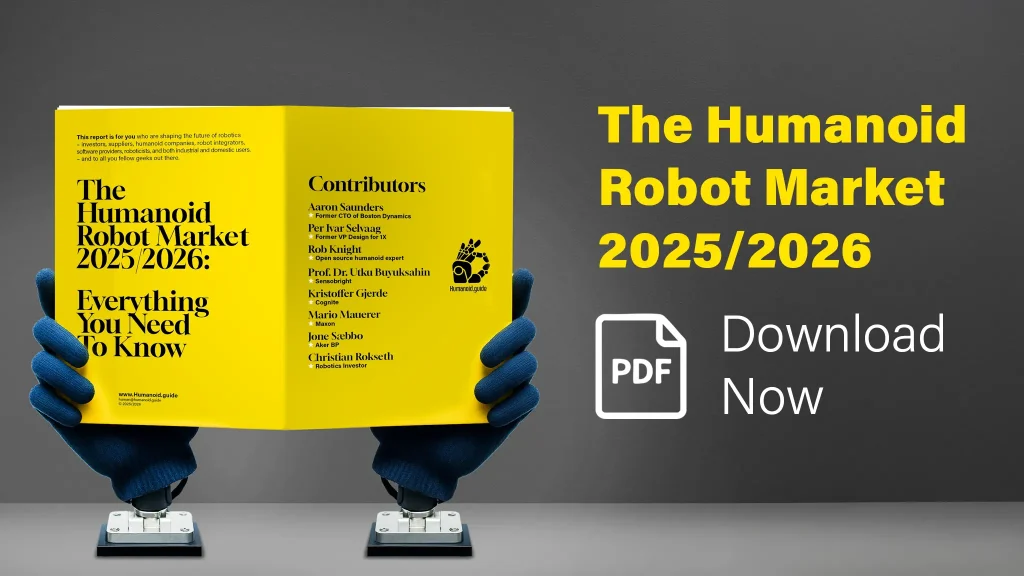
Humanoid.guide:
Humanoid.guide tracks the global humanoid robotics ecosystem: companies, components, applications, and standards and publishes research and buyer resources that separate signal from hype.


